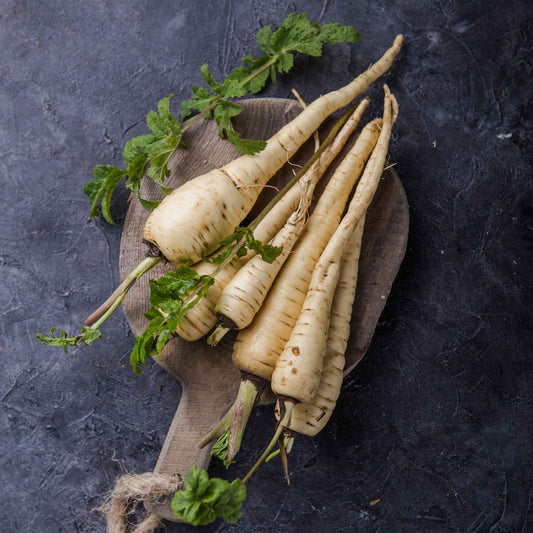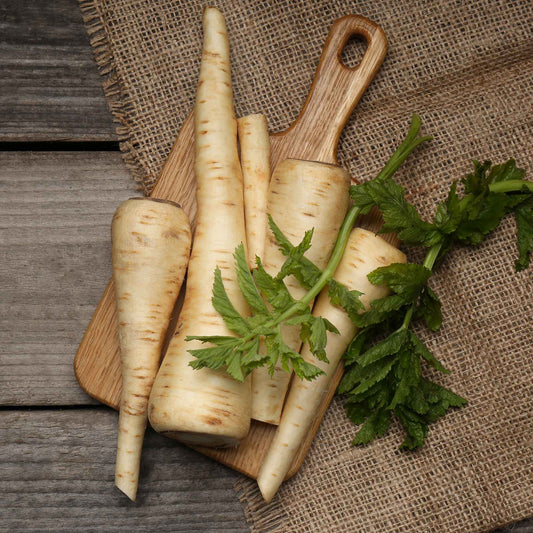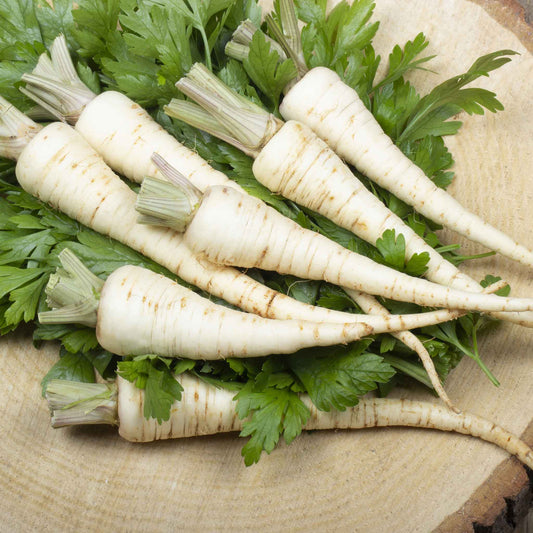-
main-collection-product-grid

Parsnip Seeds - All-American
Sweet and tender, our most popular parsnipParsnip Seeds - All-American
Sweet and tender, our most popular parsnipRegular price As Low As $4.99Regular priceUnit price per -
main-collection-product-grid

Parsnip Seeds - Hollow Crown
Known for its smooth, sweet flavor and excellent storage abilityParsnip Seeds - Hollow Crown
Known for its smooth, sweet flavor and excellent storage abilityRegular price As Low As $4.99Regular priceUnit price per -
main-collection-product-grid

Parsnip Seeds - Harris Model
Long, slim shape with a sweet flavorSaleParsnip Seeds - Harris Model
Long, slim shape with a sweet flavorRegular price As Low As $4.99Regular priceUnit price per$22.99Sale price As Low As $4.99Sale
About our heirloom parsnip seeds
- Thrives in bright, sunny growing areas
- A cool season vegetable rich in Vitamin C and potassium
- Can be roasted, pan fried, boiled, mashed, eaten raw in salads, and more
- Resembles carrots visually but have a more nutty, earthy flavor
How long has it been since you've eaten a parsnip? Have you ever tried one? Heirloom parsnips, a close cousin of the carrot and parsley, don't attract nearly as much attention as their more recognizable cousins, but they pack just as much of a nutritious punch. Parsnips take a long time to develop, but once they do, they yield a delectable root vegetable that grows sweeter with each winter frost.
Parsnips are a cool-season root vegetable that may be grown as an annual in most hardiness zones, despite the fact that they are technically a biennial. Because most parsnip types take around 100 days to develop, sow your heirloom parsnip seeds as soon as the ground is workable in your area. The soil temperature should be at least 46°F. In rows, put parsnip seeds in well-amended soil. Seedlings should be spaced three to five inches apart, and then sit back and wait! The tastiest heirloom parsnips are harvested after the first frost.
Peas, bush beans, peppers, and tomatoes are just a few of the veggies that heirloom parsnips grow well with. Parsnip blooms attract predatory insects that consume pests like aphids. Additionally, they break up tight soil by growing down and producing strong roots.
Heirloom parsnips can be roasted, cooked, mashed, or even eaten raw in the same manner as carrots. Vitamin C, K, and folate are abundant in parsnips. Antioxidants found in these root vegetables help to boost immunity and combat chronic ailments. At your dinner table, are there any picky youngsters (or adults)? Replace half the potatoes in your next batch of mashed potatoes with heirloom parsnips and see if anyone notices—and if they do, see if it's not a compliment for the cook.
But what's the nicest thing about heirloom parsnips? You can leave them in the ground to store them. Simply step outdoors and grab a few parsnips from the ground after the rest of your fresh vegetables have been consumed or have gone bad. Cold or light freezes don't damage parsnips; in fact, frost makes their roots even tastier. You'll have one less veggie to can or freeze! That's a victory for a busy gardener like you.
This season, why not give our heirloom parsnip seeds a try? Eden Brothers has four heirloom types available, and none of them will let you down.
For more information about planting, growing, and harvesting heirloom parsnip seeds, see the Parsnip Seeds Planting Guide.


